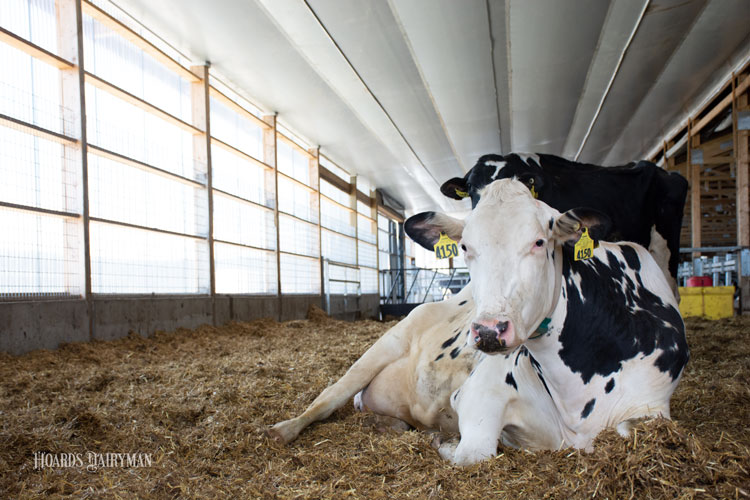
At calving, cows find themselves in a negative calcium balance. That’s because they are literally drawing from their own calcium stores to put the mineral into milk.
“Calcium homeostasis is fragile around calving time. It is a difficult time metabolically for a cow,” said Gary Oetzel, D.V.M., a professor at the University of Wisconsin-Madison’s School of Veterinary Medicine.
During the September Hoard’s Dairyman webinar, Oetzel explained that milk is really high in calcium. For a human, 30% of the daily requirement for calcium is contained in just one cup of milk.
Even more demanding is colostrum, which has twice as much calcium as regular milk. There are 0.8 to 1 grams of calcium in 1 pound of colostrum compared to 0.5 gram of calcium per pound of milk.
“This is a real shock to a cow’s system,” Oetzel shared. Throughout pregnancy, a cow provides some calcium to develop the fetal skeleton, but in the 12 hours before birth, a tremendous amount of calcium must go into colostrum. A cow then repeats that process 12 hours later. In the first 24 hours postcalving, the calcium outflow can be 20 to 30 grams.
A cow continues to pump out calcium as it reaches peak milk. “This really puts a strain on the cow,” Oetzel said. “Cows are going to struggle with calcium balance after calving just like they struggle with energy balance.”
Cows get the calcium they need through a process called lactational osteoporosis. Oetzel said cows lose 9% to 13% of their skeletal calcium within the first 30 days in milk. In all, about 2.5 pounds of calcium is lost from the 21 pounds available in their bones.
“The skeletal store of calcium is sufficient,” Oetzel explained, “but it takes several days to activate the mechanisms.” That is why cows find themselves in a calcium deficit, which can lead to clinical or subclinical hypocalcemia.
To hear Oetzel’s full presentation, watch the archived webinar “Calcium and the transition cow” on our website. This webinar was sponsored by TechMix.








